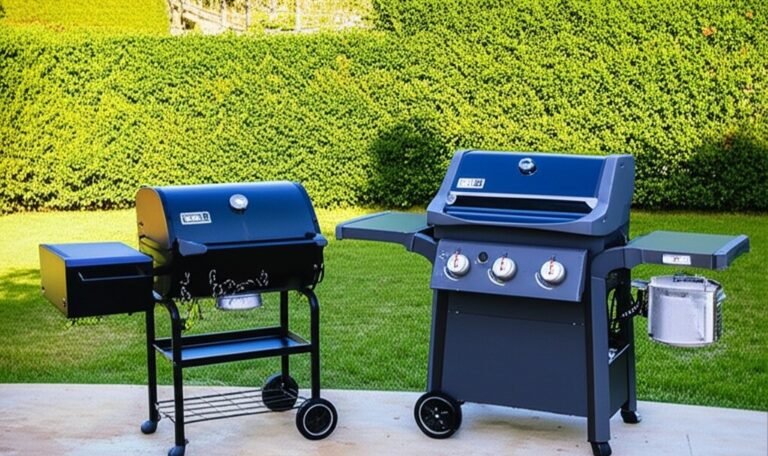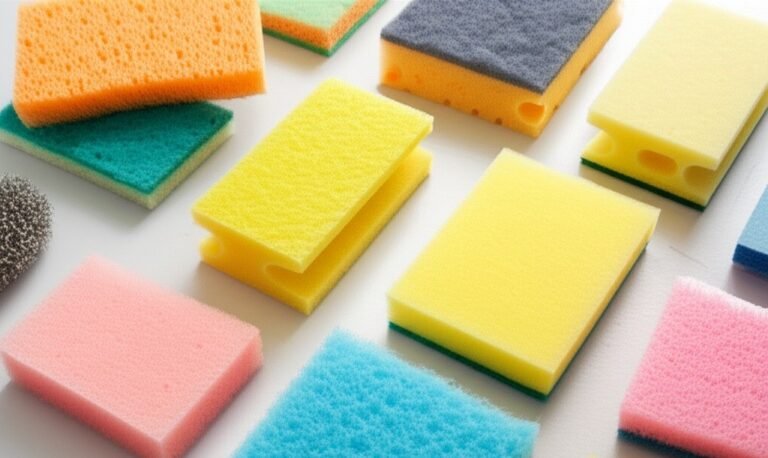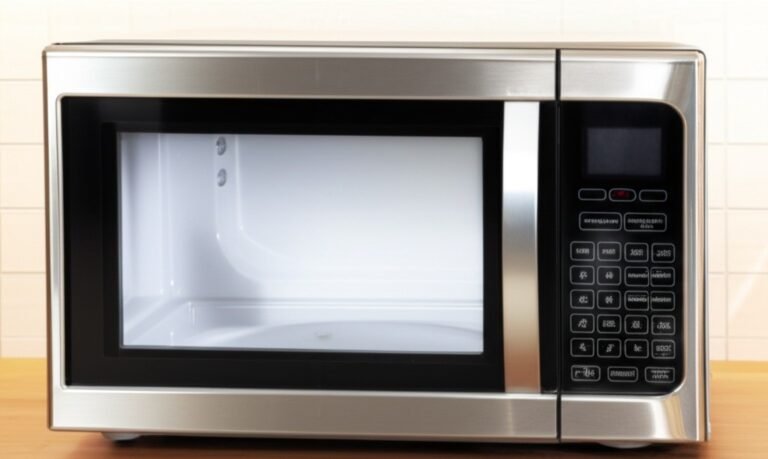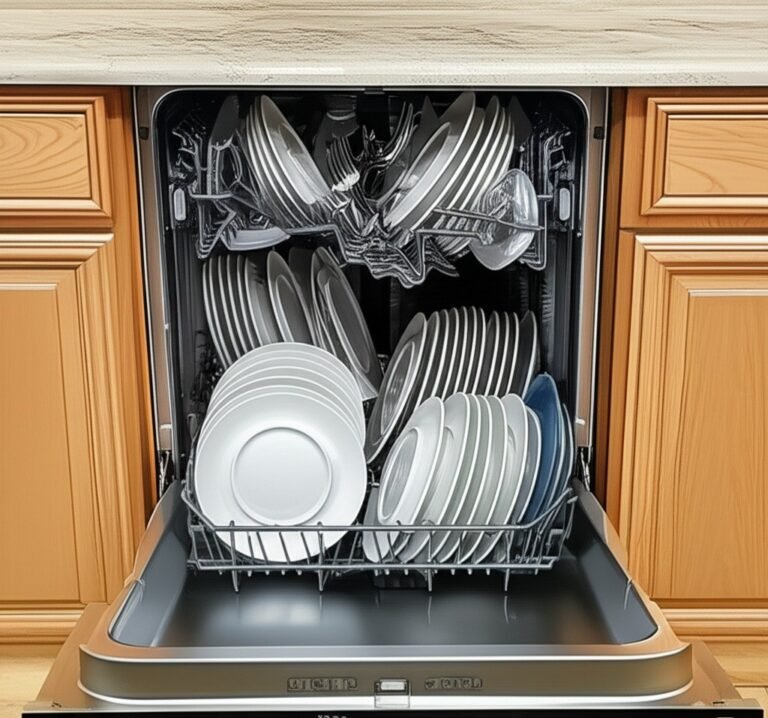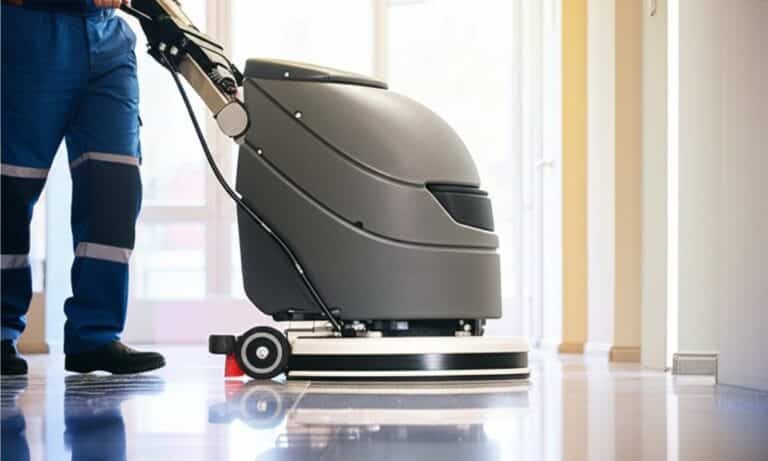Hey there, kitchen warriors! I’ve got your back! Today, we’re diving into the world Organize and Clean Your Kitchen, making it not just bearable but kinda fun too. So, grab your favorite cleaning gloves (you know, the ones that make you feel like a domestic superhero), and let’s get started!
Decluttering: Your First Step
Countertop Clear-Out
Starting with your countertops, the goal here is to create a clear, usable space. Begin by removing all items from the countertops. This means everything – appliances, jars, utensil holders, and any decorative items. As you do this, clean the surface underneath each item. A simple mixture of warm water and mild dish soap works wonders for most countertop materials. For tougher stains, a baking soda paste (mixing baking soda with a bit of water) can be gently applied and then wiped away for a deeper clean.
Once everything is off and the countertops are clean, it’s decision time. Carefully consider each item before putting it back. Ask yourself: Do I use this daily? Is it functional or purely decorative? Does it belong in the kitchen? This process helps you keep only what’s necessary and functional on your countertops. For the items that make the cut, place them back in a way that’s organized and aesthetically pleasing. The fewer items on the countertops, the easier they are to clean, and the more space you have for cooking and food preparation.
Cabinet Crusade
Now, let’s move on to the cabinets. This can be a bigger task, so set aside a good chunk of time for it. Start by emptying out all the contents of your cabinets. Lay everything out where you can see it – this helps in deciding what to keep. As you go through your items, have a box or bag ready for things you plan to donate or discard.
For the items you decide to keep, consider how often you use them. Items used daily should be placed within easy reach, while those used less frequently can go on higher shelves or towards the back. This is also a good time to give your cabinets a good wipe-down. A simple all-purpose cleaner or a mix of vinegar and water can be used to clean the insides of the cabinets. For wood cabinets, a wood cleaner can help condition the wood and keep it looking its best.
As you reorganize your items back into the cabinets, think about grouping like items together. For example, baking items in one area, pots and pans in another, and so on. This not only makes it easier to find what you need but also helps keep your cabinets tidy in the long run.
Thorough Cleaning: More Than Just Surface-Level

Top-Down Approach
Initiate your cleaning journey with the top-down approach. This method is particularly effective because it prevents the need to re-clean surfaces. Start with the highest points in your kitchen, such as the top of cabinets, refrigerator, and upper shelves. Dust and dirt tend to accumulate in these less frequently cleaned areas, and starting here ensures that any falling debris will be cleaned up in the later stages of your cleaning process.
For dusting, you can use a microfiber cloth or a duster with an extendable handle. These tools are excellent for picking up dust without scattering it around. For areas with more stubborn dirt or grease, such as the tops of cabinets near the stove, you might need a cleaning solution. A mix of warm water and mild dish soap can work well, or you can use a vinegar solution (one part vinegar to one part water) for a more natural approach. Wipe these areas down and then move on to the next level, like shelves and counters.
Appliance Deep Clean
Your appliances deserve special attention during your cleaning spree. Over time, appliances accumulate grime, food particles, and other residues that can affect their performance and lifespan. For each appliance, the cleaning method will slightly vary:
- Refrigerator: Remove all items and shelves. Clean the interior with a baking soda solution (one tablespoon of baking soda to one quart of water) to remove odors and stains. Don’t forget to clean the rubber seals and the exterior.
- Oven: Use an oven cleaner for the interior, following the instructions on the product. For a natural method, a paste of baking soda and water left overnight works well. Wipe down the stovetop and control panels with a degreaser.
- Microwave: Heat a bowl of water with lemon juice inside the microwave for a few minutes. The steam will loosen any grime, making it easy to wipe away.
- Dishwasher: Run it empty with a specialized cleaner or just vinegar to clean and deodorize.
- Small Appliances: For toasters, blenders, coffee makers, etc., unplug and clean thoroughly. Use a vinegar-water mix for coffee makers and a damp cloth for toasters and blenders.
Efficient Storage Solutions
Use of Containers
Containers are a game-changer in kitchen organization. They not only make your space look neater but also help in maintaining the freshness of your food. For dry goods like pasta, rice, and cereals, clear, airtight containers are ideal. These containers allow you to see what’s inside without opening them, saving you time and maintaining the quality of the food. They also come in uniform sizes, making it easier to stack them and utilize vertical space efficiently.
When selecting containers, consider the size and shape based on what you’ll store in them and the space available in your pantry or cabinets. Square or rectangular containers are space-efficient as they fit snugly next to each other, minimizing wasted space. Glass containers are great for health and environmental reasons, but if you’re concerned about weight or breakage, BPA-free plastic containers are a good alternative.
Label for Ease
Labeling is a simple yet powerful tool in kitchen organization. It not only helps you identify contents quickly but also keeps track of expiration dates, reducing waste. This is particularly useful in the fridge, where leftovers and perishable items can be forgotten.
You can use a label maker, write directly on the containers with a marker, or use chalkboard labels for a more aesthetic look. When labeling, include the name of the item and the expiration date or the date you stored it. For items in the freezer, this is especially important to prevent freezer burn and food waste.
Labels are also great for organizing spices. With labeled spice jars, you can quickly find what you need without sorting through a jumble of similar-looking containers. This not only saves time but also adds a professional touch to your kitchen.
Fridge and Freezer Organization
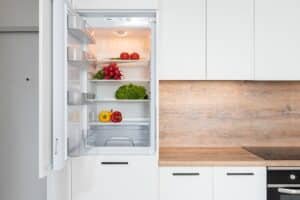
Check Expiration Dates
One of the key components of organizing your fridge and freezer is to regularly check for expired items. This is not just about keeping things neat; it’s crucial for food safety. Go through each item in your fridge and freezer and check their expiration dates. This includes looking at perishables like dairy products, meat, and leftovers, as well as frozen items, which can suffer from freezer burn over time.
When checking dates, it’s also a good opportunity to clean your fridge and freezer. Remove all items and wipe down the shelves with a suitable cleaner. For the fridge, a simple mix of water and baking soda can effectively clean without leaving a strong scent. In the freezer, a gentle defrosting, if necessary, followed by a wipe-down can help maintain its efficiency.
Discarding expired items not only prevents health risks but also gives you a clear idea of what you have, helping in meal planning and grocery shopping. It reduces clutter and ensures that you’re using ingredients at their best.
Organize by Category
After cleaning and checking for expiry dates, the next step is to organize your fridge and freezer by category. This method streamlines finding what you need and helps in keeping track of your inventory.
In the fridge, designate specific areas for different types of food. For instance, keep all dairy products on one shelf, vegetables in the crisper drawer, condiments in the door, and so on. This categorization makes it easier to find items and also helps in keeping your fridge clean, as you can quickly spot spills or leaks related to specific types of food.
In the freezer, use bins or baskets to group similar items together. You could have one for frozen vegetables, another for meat, and a separate one for ready-to-eat frozen meals. This not only keeps things organized but also prevents items from getting buried and forgotten.
For both fridge and freezer, consider using stackable containers for leftovers or pre-prepped meals. These containers save space and keep your fridge and freezer looking tidy. Plus, they make it easy to see what’s inside, reducing the chances of food going to waste.
Sorting the Small Things
Utensil Sorting
Utensils are essential tools in the kitchen, but they can easily become cluttered and disorganized. The first step in utensil sorting is to go through all your utensils and decide which ones you actually need. It’s easy to accumulate duplicates or specialized tools that you rarely use.
Start by laying out all your utensils on a large surface. Go through each one and ask yourself a few questions: How often do I use this? Do I have multiple items that serve the same purpose? Is this utensil in good condition? If you find utensils that are rarely used, duplicates, or in poor condition, consider donating them or recycling if possible.
Once you have narrowed down your utensils to those you regularly use, think about the best way to store them. Drawer organizers can be very helpful in keeping utensils neat and separated. If you’re short on drawer space, a utensil holder on the countertop for frequently used items like spatulas, wooden spoons, and whisks can be very practical. The key is to keep them organized and accessible.
Spice Organization
Spices are integral to cooking, but they can easily become a jumbled mess in a cabinet or drawer. Organizing your spices can not only save you time while cooking but also help you keep track of what you have and reduce waste.
There are two effective methods for organizing spices: alphabetical and by frequency of use. If you’re a stickler for order, alphabetical arrangement makes sense. It’s a straightforward method where you can easily find what you’re looking for. Alternatively, organizing spices by frequency of use can be more practical. Place the spices you use most at the front or in an easily accessible spot, and the less frequently used ones further back.
When organizing spices, consider the storage method. Spice racks that fit inside a cabinet door, tiered shelves, and drawer inserts can all be effective ways to keep spices visible and orderly. If your spice containers are a mix of different shapes and sizes, transferring them to uniform jars can not only make them easier to store but also add a visually appealing element to your kitchen.
Establishing a Cleaning Routine
Creating a Regular Schedule
The key to an effective cleaning routine is to make it realistic and manageable. This means breaking down tasks into smaller, more frequent activities that fit into your daily life. By doing so, you avoid the buildup of grime and clutter, making the task of cleaning less overwhelming.
Daily Tasks: These are small, quick tasks that keep your kitchen tidy on a day-to-day basis. This could include washing dishes, wiping down countertops and stove tops after cooking, and sweeping the floor. Daily tasks are about maintenance and preventing messes from accumulating. This way, you’re not left with a daunting pile of chores at the end of the week.
Weekly Tasks: Weekly tasks are more involved and address areas that don’t require daily attention but can still benefit from regular cleaning. This includes mopping the floor, cleaning appliances like the microwave and dishwasher (interior and exterior), and wiping down cabinet fronts. You might also include a more thorough cleaning of countertops and backsplashes to remove any buildup from cooking.
Monthly Tasks: These tasks are focused on areas of your kitchen that don’t require frequent attention but are crucial for long-term maintenance. Monthly tasks might involve cleaning the oven, defrosting and cleaning the freezer, organizing and wiping down the pantry, and deep cleaning the refrigerator. This is also a good time to check and clean less accessible areas, like the tops of cabinets and under the sink.
Tips for Maintaining the Routine
- Be Consistent: Try to stick to your schedule as closely as possible. Consistency is key to preventing tasks from becoming too big to handle.
- Involve Family Members: If possible, involve other household members in the routine. Assigning tasks can make the work lighter and more manageable.
- Keep Cleaning Supplies Handy: Having your cleaning supplies organized and within easy reach encourages you to stick to your cleaning routine.
- Stay Flexible: While consistency is important, be flexible and willing to adjust the routine as needed. Life happens, and sometimes your schedule needs to adapt.
Personal Touches

Decorate Your Space
Decorating your kitchen with personal touches is an opportunity to express your personality and create an atmosphere that makes cooking and dining a more enjoyable experience. The decoration doesn’t have to be extensive or expensive; even small additions can make a big difference.
Plants: Adding greenery to your kitchen can bring life and color to the space. Plants not only enhance the aesthetic appeal but also improve air quality. Consider easy-to-care-for indoor plants like herbs, which are not only decorative but also functional for cooking. If you’re not confident in your green thumb abilities, low-maintenance plants like succulents or artificial plants can also add a touch of nature to your kitchen.
Decorative Pieces: This could include anything from artwork, family photos, to unique ceramics or vintage finds. Artwork can be a great conversation starter and add a pop of color to your kitchen walls. Family photos can create a sense of warmth and nostalgia. When selecting decorative items, consider the overall theme and color scheme of your kitchen to create a cohesive look.
Unique Accents: These might include colorful kitchen towels, a stylish dish rack, or unique light fixtures. Even everyday items can be a part of your kitchen’s decor if chosen thoughtfully. The idea is to find items that are not only functional but also add to the overall aesthetic of your kitchen.
Organize and Clean Your Kitchen With us!
Transforming your kitchen into a well-organized, clean, and inviting space is a journey that involves a combination of decluttering, cleaning, organizing, and personalizing. Each step, from sorting out your utensils and spices to establishing a cleaning routine, plays a crucial role in enhancing the functionality and aesthetic appeal of your kitchen. By incorporating efficient storage solutions, maintaining a regular cleaning schedule, and adding personal touches, your kitchen becomes more than just a place to cook – it becomes a heartwarming space that reflects your lifestyle and personality.
Remember, the key to a successful kitchen organization and cleaning routine lies in consistency and adaptability. Regular maintenance, coupled with a touch of creativity and personal flair, can make your kitchen a truly enjoyable and efficient space. And while these steps can greatly improve your kitchen, sometimes a helping hand can make all the difference.
If you find yourself needing that extra bit of help or simply want to indulge in professional cleaning services, don’t hesitate to reach out to Toronto Shine Cleaning. They offer a range of services that cater to all your kitchen and home cleaning needs, ensuring your space is not only clean but also shines with the care and professionalism they bring.














